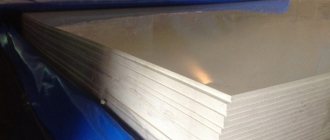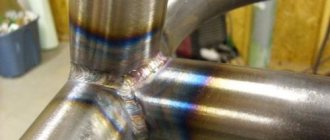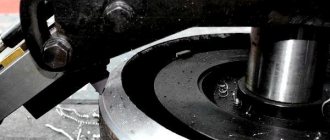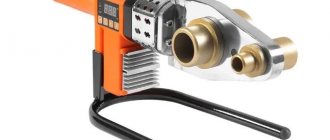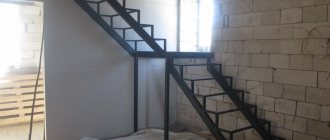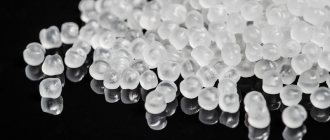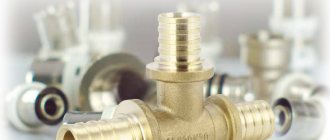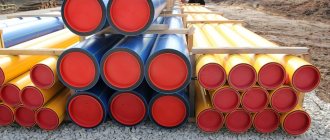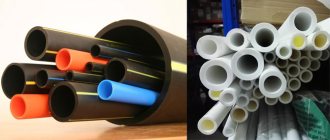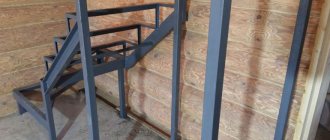Welding of polyethylene can be performed both in ordinary and industrial conditions. Its implementation is most popular when creating coverings for greenhouses, where pieces of material are joined using contact heating. Soldering may also be needed for book covers, packaging bags, and other needs.
Film welding scheme.
Welding of polyethylene film is carried out by bringing the polymer material into a viscous state. To do this, its edges are heated to a temperature at which melting begins, then they must be connected and squeezed tightly. To do this correctly, you can use a device specially designed for this purpose for welding polyethylene. The operation of such devices can be carried out in several modes, which are set depending on the thickness and characteristics of the polymer and its type.
Professional welding devices
For large-scale work (for example, to create covers for large greenhouses or for commercial activities), it is recommended to use professional polyethylene welding devices.
The advantages of these devices are that they allow flexible adjustment of parameters of pressure, temperature, and speed of movement along the seam. If you are working with the same batch of polyethylene, then by setting the required values once, you can carry out the welding process at high speed. Devices for welding often have setting and tension rollers, which allow the film sheets to be connected to be pulled at the same speed, which has a beneficial effect on the final quality of the seam.
Industrial devices are produced in various types. They can have contact heating or heating carried out by hot air.
Working with large areas of material is economical when choosing a welding connection, since there is no need for adhesives or tape. Productivity and accuracy of work increases significantly. The low melting point and flexibility of the material allows the connection to be made by welding at home. The resulting joint strength mainly depends on the temperature and cleanliness of the surfaces being joined.
How polymers are joined using a “hot wedge”
In production conditions, it is possible to weld pieces of polymer using a special apparatus. It is used to work with such types of materials as HDPE, PVC, polypropylene and others like them.
Iron attachment diagram.
This device has the following operating principle: the wheels are driven from the engine through a gearbox, and a “hot wedge” is placed on a tripod between arranged sheets of material. The thermostat of the device puts into operation a system that automatically maintains the desired temperature. This helps ensure greater accuracy and reduces the likelihood of large temperature fluctuations. The operating speed is controlled automatically, and a relatively stable voltage is ensured in the electrical circuit.
Such equipment meets safety standards and provides greater ease of use. Welding is carried out at a certain speed, which can be adjusted manually. The required pressure is transmitted through the pressure rollers using a special lever.
The device allows you to obtain a double seam on dense material, the strength of which is approximately 85%. The process is carried out automatically; you only need to manually adjust the temperature and speed of the working element.
The “hot air” device can be described as a type of industrial hair dryer. Its advantage is lightness. The device is suitable for long-term use. The mechanism is very powerful, and therefore the effect is quite effective. Its use is possible for such types of material as HDPE, PVC, LDPE film.
Welding parameters for polyethylene and polypropylene products
Materials Melt Flow Index (MFR)
Welding of high density polyethylene (PE-HD, HDPE)
Products made of high-density polyethylene of melting group with index 005 (MFR 190/5: 0.4-0.7 g/10 min.), group 010 (MFR 190/5: 0.7-1.3 g/10 min. ) or groups 003 (MFR 190/5: 0.3 g/10 min.) and 005 (MFR 190/5: 0.4-0.7 g/10 min.) are suitable for welding with each other. This is confirmed by the standards DVS 2207 part 1 (DVS - German Welding Association) and is confirmed in the documents of the DVGW (German Gas and Water Union).
Welding of polypropylenes: polypropylene homopolymer (PP type 1, PP-N) and polypropylene block copolymer (PP type 2, PP-C, PP-R)
The weldability of polypropylenes is indicated within the melting index group 006 (MFR 190/5: 0.4-0.8 g/10 min.). This is confirmed by DVS 2207 part 11.
Temperature of the welding process of polypropylene and polyethylene
Hot gas welding
| Air, l/min. | Temperature in the nozzle ˚ C | Gas speed cm/min | ||||
| Nozzle diameter, mm | Speed nozzle diameter | |||||
| 3 | 4 | 3 | 4 | |||
| Welding polyethylene | 60-7060-7060-70 | 300-340300-340270-300# | 10-1510-15- | approx. 10 approx. 10- | 50-6050-6025-30 | 40-5040-5020-25 |
| Welding polypropylene | 60-7060-7060-70 | 280-320280-320280-320 | approx. 10 approx. 10 approx. 10 | 50-6050-6050-60 | 40-5040-5040-50 |
Welding with a manual extruder
| Extrudate temperature measured at the nozzle outlet, º C | Air temperature measured at the warm air nozzle, ºC | Air quantity, liters/min. | |
| PE hardPP | 200-230200-240 | 210-240210-250 | 350-400350-400 |
Effect of humidity
Products being welded (sheets, plates) and welding rod made of polyethylene and polypropylene can, under certain conditions, absorb moisture. Studies by a number of manufacturers have found that polyethylene and polypropylene welding rods absorb moisture depending on the material and environment. In extrusion welding, the presence of moisture may appear in the form of pits in the weld or a rough weld surface. This phenomenon intensifies with increasing seam thickness.
In order to prevent such undesirable consequences, the following recommendations have been developed:
- Installation of moisture and oil separators in the air supply system,
- Avoidance of significant temperature differences between parts being welded (condensation moisture),
- Storing the welding rod in a dry place if possible,
- Drying the welding rod at a temperature of 80°C for at least 12 hours,
- Welding wide seams (>18mm) in several passes.
Depending on the type of heating of polypropylene and polyethylene, the following types of welding are distinguished:
- Welding thermoplastics with hot air (hair dryer)
- Welding thermoplastics with an extruder
- Welding thermoplastics using a heating element
- High frequency welding of thermoplastics
- Laser welding of thermoplastics
Production of sealed moisture-proof packaging
Sometimes, when packaging products, it is necessary to minimize the air humidity inside the compartment. To do this, just add a bag of silica gel inside the compartment. Before packaging, silica gel must be dried for 3-4 hours in an oven at a temperature of 150-180°C. The tightness of such packaging can be checked by squeezing the compartment immersed in water and observing the appearance of air bubbles.
Welding with rod
For example, when laying PVC linoleum, welding using a filler rod is required. Linoleum is pre-prepared. It should be laid firmly on the floor.
All joints must fit without creating cracks or gaps. A high-quality seam without the use of special equipment is very difficult. A regular hairdryer is not capable of doing this due to the significant thickness of the linoleum.
Requires special tools and equipment. Before welding with a rod, the edges must be prepared; the molten rod will ensure their reliable connection. The resulting deposits are removed with a special knife.
Welding with a soldering iron
An ordinary electric soldering iron is also suitable for bonding film at home. It is best to put a tip with a student or poster pen made of metal on its sting. If the polymer is burned through, the tip is slightly moved from the tip of the device - this reduces the heat transfer area.
Soldering is more reliable if you attach special rollers to the soldering iron. The tip is ground off until it stops, a groove is cut in the center of the end, for which a hacksaw is used. You will need a copper disk with a diameter of 1 cm (those who are serious about building such a device can grind it themselves).
Drill a hole with a diameter of approximately 5 mm to attach the axle, insert the disc into the slot made and secure it. It should rotate freely. To ensure an even weld, guide it along a ruler. The device must be guided to the point where the seam ends, without tearing it off, with pressure. This approach is most often used for sealing bags. To get a beautiful seam, practice a little on unnecessary pieces.
Welding polyethylene using a heating element (Butt Welding)
Polyethylene welding using a heating element (also called butt welding) is used for welding plates, blocks and other semi-finished profiles. This type of welding is extremely widely used for welding pipelines made of thermoplastics. Unlike the previous two welding methods, this method does not require the use of filler material.
For welding using a heating element, the so-called. machines for butt welding, the principle of operation of which (heating using a heating element of various shapes) is the same, and differing only in the type of drive (manual, mechanical, pneumatic, etc.) that transmits shear force to the elements being welded. In addition, butt welding machines may be equipped with special equipment and various options - for example, for welding sheets at an angle, for rolling up the sheets being welded.
Some types of butt welding machines, in addition to HDPE, can also weld HMPE and UHMWPE.
When butt welding polyethylene, the necessary heat is supplied directly from the heating element to the welding zone of the surfaces being joined. This achieves a more favorable heat distribution, so that no zone of the material is loaded with more heat than another. In addition, the mating surfaces of the heating element must be clean and completely adjacent. This type of weld exhibits little internal stress and can be loaded in much the same way as the original material.
Stages of work
Film welding includes the following steps:
- surface preparation of welded elements
- heating of soldering areas;
- welding of elements;
- cooling of the weld (welded elements are under pressure);
- releasing welded elements from pressure;
- weld processing.
Using a soldering iron to weld film
Connecting sheets of polyethylene using a conventional soldering iron (40-60 W) allows you to obtain a strong seam, which will require minor modification of the tool. Using a soldering iron without special attachments will not give high-quality results. The joint will be uneven, and there may be places where the material will spread.
Film welding scheme.
To obtain a good result and weld joints of significant length, you will need to use additional devices. There are several options for modifying the soldering iron.
Take a regular soldering iron, then remove the end of the tip. A cut is created using a hacksaw. After this, a copper or aluminum plate is inserted into the cut and secured with a rivet. The surface of the plate is processed, its edges are rounded with a file. Welding is carried out by slightly pressing the soldering iron at an angle of 45° and moving it evenly.
Temperature and pressure are selected experimentally. When creating a joint, it is recommended to place a flat wooden or textolite substrate under the bottom layer of film, and center the soldering iron on a flat block. In some cases, thin paper will be placed between the plate and the film. This is relevant if thin film is being welded. After creating the seam, the paper is carefully separated.
An approximate sample of a nozzle is shown in Fig. 1 (1 – plate; 2 – soldering iron and its rod).
Ultrasonic welding diagram.
It is possible to install the disk in a separate tube-tip, and it, in turn, is put on the soldering iron tip. Welding pieces of film is carried out by rolling a heated soldering iron to the required distance. The amount of pressure is adjusted depending on the welding of the seam. This method allows you to carry out a significant amount of work.
Search for materials
Polyethylene film of different thicknesses can be purchased at hardware and construction stores. Its cost is directly proportional to thickness. For example, in my penates, a linear meter of film with a thickness of 100 microns, or 0.1 mm, costs $0.5, and a “sleeve” type film, consisting of two films of 30 microns each, costs only $0.3.
A small piece of fluoroplastic tape can be purchased at the local market from sellers of heating elements and nichrome wire, in aisles where they sell tools and other hardware products.
For ease of use, it is better to secure a narrow strip of fluoroplastic tape on a wooden ruler with two small screws with countersunk heads.
If fluoroplastic film cannot be obtained, then it can be replaced with a backing from self-adhesive wallpaper or self-adhesive tape. If the length of the seam is short, then a backing from self-adhesive labels, the format of which usually does not exceed A4, is also suitable.
DIY film soldering
Polyethylene pipelines are installed in two ways: using fittings and flanges or several types of welding.
The connection requires special fittings (couplings and sockets) and without them. For pipes with a wall thickness less than 4.5 (diameters 50-110 mm), welding using fittings is used; for larger pipes with a thicker wall, butt welding and extruder welding are acceptable.
Diffusion
The diffusion method involves heating the ends to a viscous flow state. The prepared ends of the workpieces are joined and slightly compressed. Movable polymer molecules, under the influence of pressure, move into the parts being connected, mix, freeze in a new position when cooled, form new chemical bonds and ensure reliable adhesion of the pipes to each other.
Bell method
Not the most typical way. There are two options for implementation: using socket pipes and couplings. The method itself is reminiscent of welding polypropylene pipelines: the socket or coupling and the workpiece are heated using a soldering iron with a special nozzle.
Then the workpiece is inserted into the socket of another pipe or coupling, fixed, pressed and held. Welding time – 20 seconds. If couplings are used, then the second pipe is soldered into the coupling in the same way. The cost of couplings is low; products with a socket are rarely found in stores.
The connection is reliable and durable; small diameters can be welded.
Butt welding
Before carrying out work, cut off the polyethylene pipe strictly perpendicularly and thoroughly clean the ends. Then fix the pipe in the welding machine and carefully center it.
Cool the joint, then remove the machine. The work has its own subtleties; it requires two people.
Extruder welding
Extrusion - welding using a small apparatus from which molten polyethylene is extruded under pressure. Raw materials in the form of rods or granules are loaded into the extruder.
Extrusion is used on pressure communications with a wall thickness of more than 6 mm, but it can also be used to patch non-pressure sewer pipelines with a thinner wall. The connection point is heated by a stream of hot air.
It is advisable to chamfer the ends.
Protective film for the kitchen TV remote control
We will cover the remote control for the kitchen TV in film to protect it from contamination.
Measure the length of the perimeter of the remote control at its widest point using paper tape.
Fold the tape in half and use it to mark the template.
For such packaging it would be good to use a special shrink film. But I didn’t have such a film, so I picked up a bag from some factory packaging with slight shrink properties.
We weld the pocket with a minimum allowance. Although, if you have real shrink film at your disposal, then such accuracy will not be required.
We shrink the protruding ends of the bag using a hairdryer to make the packaging more elegant and streamlined.
Tools and devices
Soldering with an iron
This is a fairly simple way to connect parts of fabrics, because household irons are found in almost every home.
To connect polyethylene in this way, you need to place a wooden block on the table. The edges of the joined canvases are located on this unique stand.
They should protrude from the edges of the block by twenty millimeters. The top of the polyethylene is covered with a sheet of refractory material (cellophane, fluoroplastic film).
The formation of the seam can be accelerated by subsequent cooling. To do this, after exposure to high temperatures, the joint is treated with a wet rag.
When passing over the joint, the iron tilts five degrees. You need to move it slowly along the joint. Once is not enough to form a strong seam; the procedure must be repeated about four to five times.
Also, to work with the iron, special soldering nozzles are used, which are fixed on top of the device. They have a flat, ribbed base.
Soldering with a soldering iron
To weld two sheets of film, a home soldering iron with a power of 40-60 W is used. However, this device requires some improvement to perform such a job.
To work with polyethylene material, the end of the tip is removed from the soldering iron. After this, a cut is created into which a plate of aluminum or copper is inserted. The plate is secured with a rivet, processed and rounded with a file.
The impact on the joint of the canvases is made at an angle of forty-five degrees. The soldering iron is pressed against the surface, and then slowly moves along the joint. The movement should be uniform, without jerks or stops.
The wheel is a disk with a diameter of eight to ten millimeters. The disc material can be aluminum or copper.
You can make it yourself. The metal wheel is placed in the cut, in which it is secured with an axle. The method of joining with a wheel is based on heating it and then rolling it along the joint.
Safety precautions
- It is necessary to prepare the workplace by removing everything unnecessary from it.
- Place the working tool on it in a convenient order.
- Check wiring and grounding carefully to ensure that insulation is not damaged.
- Make sure the equipment is working properly by performing a test run of the installations.
- Before starting work, check the equipment for damage and defects that could create an emergency situation and negatively affect quality.
- If you have a portable welding installation, it is necessary to ensure maximum freedom of movement, thereby ensuring quick completion of work, thereby eliminating all risk factors for the operator of the installation.
Special equipment
Forethought is required when selecting equipment
It is important to consider the complexity of the work. To cope with large volumes of films, industrial equipment is used
Special devices are used to join polyethylene. Their prices vary. It is worth noting the budget model PP-40.
It allows you to get an even and durable seam on any contour: straight or complex. PP-40 is shaped like a soldering iron, but has a different tip.
They also use special attachments for electric irons. They are made from sheet metal, such as aluminum. The base of the nozzles is made flat and ribbed. This surface firmly fixes the film joint during welding.
The edges of the film are secured with ribs. Then move the strip along the area to be welded. This creates a double seam.
Large jobs require the use of more serious tools. To create a large-area film joint, you will need special welding equipment.
Such equipment is equipped with settings for the level of pressure, temperature, and the speed of movement of the heated element along the surface of the polyethylene. In household options for forming film seams, there are no such functions.
In addition to setting regulators, soldering machines are equipped with roller mechanisms. These are setting and tension elements that stabilize the speed of advance of the film sheets being welded.
This improves the quality of polyethylene soldering and increases the strength of the connection.
There are devices that use different heating methods: air and contact. Air heating is produced by exposing the material to hot air. Contact involves a heating element in contact with the material.
Manufacturing of cellular packaging
We make a template for welding from ordinary writing paper, indicating the location of the seams with a thick line. To avoid confusion, locking seams can be marked with a dotted line.
To illustrate different welding techniques, I specifically chose a package divided into several compartments.
We fix the paper template on a flat, hard surface. On top of the template we will place two layers of plastic film, cut with a small margin. Although, if you need a lot of packages, it is better to use a long ribbon.
It is better to start forming the compartments by welding the partitions. It is advisable to calculate the template so that the filling of the compartments can be done before welding and trimming the edges that lock the compartments. That is, there should be no more than two rows of compartments. This will reduce the number of approaches for welding and filling cells.
The speed of movement of the mandrel along the ruler is directly proportional to the temperature of the working surface of the mandrel and inversely proportional to the thickness of the film being welded. The value of this speed is obtained experimentally.
The internal partitions of the compartments are formed, now we will change the mandrel and weld the external, non-locking seams while trimming the edges.
We will fill the compartments according to specifications.
We will complete the packaging of the parts by welding the locking seams.
This is what we got.
Using an iron as a welding heater
The next popular method is to melt the film and create a joint using an iron. The advantage of this method is that large areas of the film can be welded in this way, while creating the desired seam width. Since any iron has a thermal relay and the ability to regulate the temperature, choosing the required thermal mode for polyethylene of various thicknesses is not difficult.
The welding process is best carried out on a smooth wooden surface. Pieces (sheets) of film are overlapped, the width of which is selected individually, then the top layer is covered with paper or a fluoroplastic sheet, after which it is pressed and the iron is drawn along the welding line. The clamping force, speed and temperature are selected experimentally.
The nozzle is made of brass, copper or aluminum.
Prologue
There are special factory-made devices for welding film materials, but their price usually exceeds $100, and their versatility leaves much to be desired.
We will now master two technological techniques at once that will allow us to solve a wide range of problems related to packaging products in small-scale production or small retail trade. Our costs, in this case, will be mainly determined by the cost of the film being welded itself.
